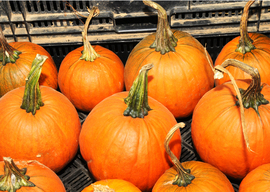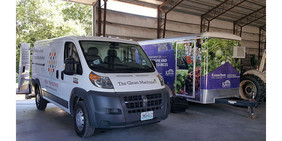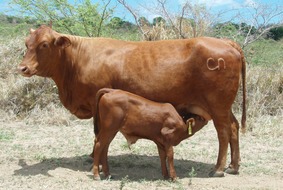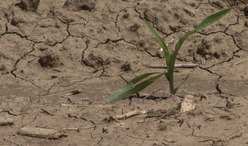|
Having trouble viewing this email? View it as a Web page.

|
|
|
Fresh from the Field is a weekly album showcasing transformative impacts made by grantees supported by the National Institute of Food and Agriculture.
Editor's note: Fresh from the Field normally publishes at noon each Thursday. Technical difficulties delayed this edition. We regret the inconvenience.
Nov. 3, 2017
|
|
Success Stories

Pumpkin Genomes Sequenced, Reveals Uncommon Evolutionary History
For some, pumpkins conjure carved Halloween decorations, but for many people around the world, these gourds provide nutrition. Scientists at the Cornell-affiliated Boyce Thompson Institute and the National Engineering Research Center for Vegetables in Beijing have sequenced the genomes of two important pumpkin species. Once deciphered, the genome sequences are an important resource for further scientific research and breeding of Cucurbita crops. By analyzing the genomes, researchers will identify many genes associated with the pumpkin’s desirable traits.
Cucurbitas have large genomes with 20 pairs of chromosomes, compared to watermelon’s 11 or cucumber’s seven. This was the first clue that the pumpkin’s genome had expanded a long time ago. The genome sequence analysis revealed that between 3 million to 20 million years ago.
The next time you carve a pumpkin, take a moment to think about the curious evolutionary path it took to get here, and how breeders, now armed with the genome sequence, will be better able to improve the pumpkin to help feed millions around the world.
The finished genomes appear in the October issue of Molecular Plant.
NIFA supports this research through the Specialty Crop Research Initiative.
Read the full story at the Cornell Chronicle. USDA photo.
|
 3-D Crop Imaging Helps Farmers Estimate Plant Height
Building three-dimensional point clouds from high-resolution photos taken from unmanned aerial vehicles or drones may soon help plant breeders and agronomists save time and money compared with measuring crops manually.
Dr. Lonesome Malambo, postdoctoral research associate, Texas A&M University ecosystem science and management department in College Station, recently published on this subject in the International Journal of Applied Earth Observation and Geoinformation.
Crop researchers and breeders need two types of data when determining what crop improvement selections to make: genetic and phenotypic, which are the physical characteristics of the plant. Great strides have been made in genetics, Malambo said, but much work still needs to be done in measuring the physical traits of any crop in a timely and efficient manner. Currently, most measurements are taken from the ground by walking through fields and measuring.
Over the past few years, UAV photos have been tested to see what role they can play in helping determine characteristics such as plant height. Measured over time, UAVs can help assess the influence of environmental conditions on plant performance.
NIFA supports this project through the Agriculture and Food Research Initiative.
Read the entire story by Kay Ledbetter on AgriLife Today.
Texas A&M AgriLife photo by Lonesome Malambo.
|
News Coverage

Volunteers Donate Thousands of Pounds of Produce
In northeast Kansas recently, volunteers quickly and quietly moved through a field, picking ripe tomatoes and peppers. They were gathering fresh produce at Kansas State University’s Olathe Horticulture Research and Extension Center to donate to food pantries in the region.
A nonprofit organization, After the Harvest, coordinates the volunteers, who go through farm fields like this after growers have harvested their crops to glean whatever is left of the still-nutritious, healthy fruits and vegetables, keeping them from going to waste. Then, they donate them to agencies that serve hungry people, primarily in the greater Kansas City area.
This year, the K-State horticulture center donated 16,163 pounds of vegetables, up from 3,450 pounds in 2016.
Read
the full article at Morning Ag Clips.
NIFA supports this project. Photo courtesy of K-State Research and Extension.
|
The Library

Impacts of Stress on Animal Welfare and Performance
Environmental and management conditions can stress livestock and impair their health. Poor health can result in poor performance. For example, the U.S. dairy industry loses around $1 billion each year as a result of heat stress to dairy cows. Adverse weather conditions and temperature extremes can be especially hard on grazing cattle that are often exposed to the elements and confinement feeding operations where close quarters can intensify conditions.
Researchers from land-grant universities across the nation are working with the U.S. Department of Agriculture and international partners to find innovative ways to reduce stress on livestock and maintain high levels of performance.
By providing scientists, educators, veterinarians, producers, and policymakers with the latest research-based information, this project is helping protect livestock health, sustain livestock performance, and ensure a steady supply of high-quality beef and dairy products for consumers.
NIFA supports the research through the Multistate Research Fund.
Read more of Sarah Delheimer's fact sheet. Photo by Robert Godfrey.
|
Video
 Seeds of Hope
Wheat is a very important crop around the world, but just like other organisms, it is susceptible to a variety of diseases. This video delves into the world of plant breeders and plant pathologists. It takes a look at some of the biotic constraints on our wheat crops, and how plant breeding can alleviate their damage to this vital commodity.
Seeds of Hope, a video created by the Triticeae Coordinated Agricultural Project (CAP), led by University of California, Davis, discusses the importance of continual plant breeding for disease and pest resistance. Plant breeding is a sustainable solution because it provides plants that are less impacted by disease and pests without additional inputs. Because disease and pests are always changing, plant breeders must be continually working to provide new varieties.
The more than 100 commercial varieties developed through the T-CAP and its predecessor CAPs have a $1.8 billion production value.
Watch the Seeds of Hope video.
|
Tweet of the Week
#NIFAIMPACTS
|
|

NIFA’s mission is to invest in and advance agricultural research, education, and extension that solve societal challenges. NIFA’s investments in transformative science directly support the long-term prosperity and global preeminence of U.S. agriculture. To learn more about NIFA’s impact on agricultural sciences, visit www.nifa.usda.gov/Impacts, sign up for email updates or follow us on Twitter @USDA_NIFA, #NIFAImpacts.
Editor: Falita Liles
USDA is an equal opportunity lender, provider, and employer.
|
|